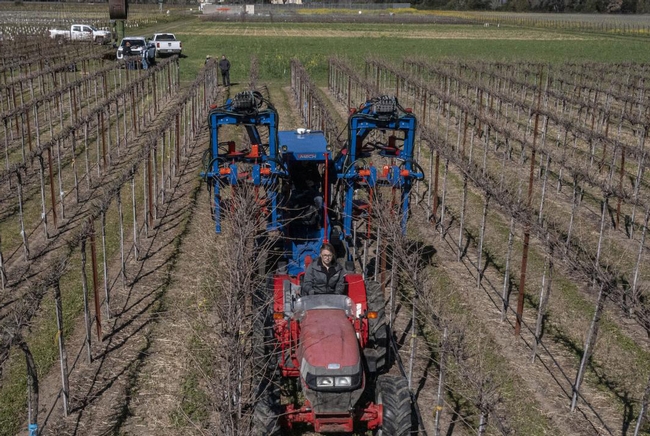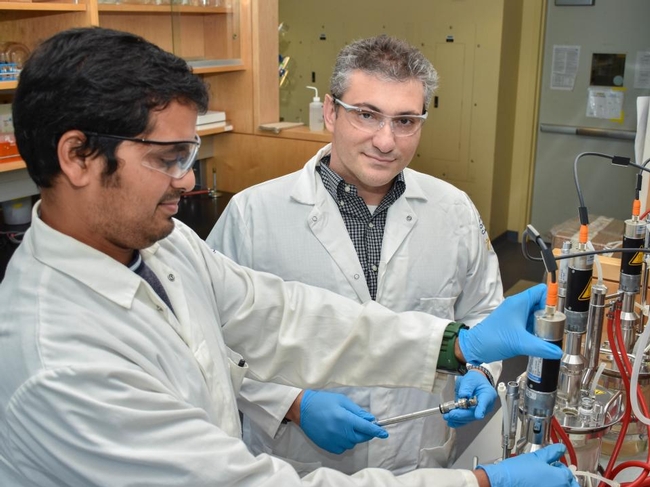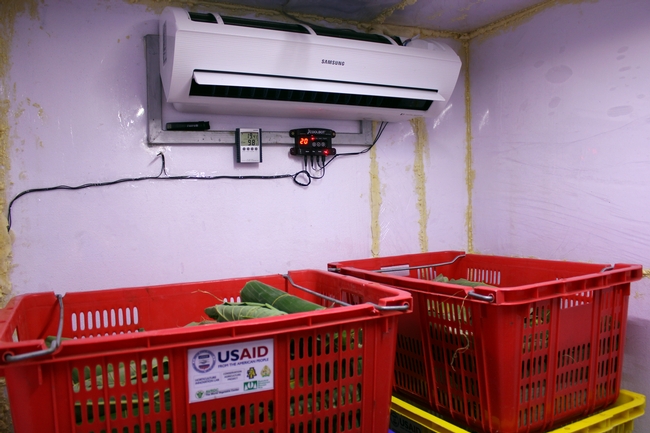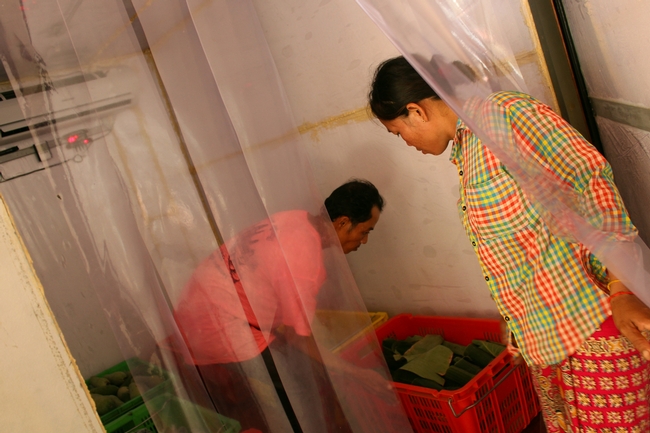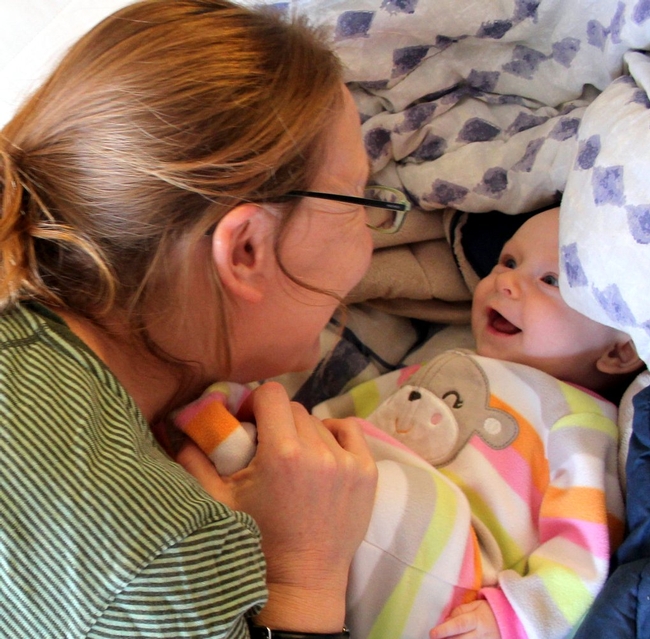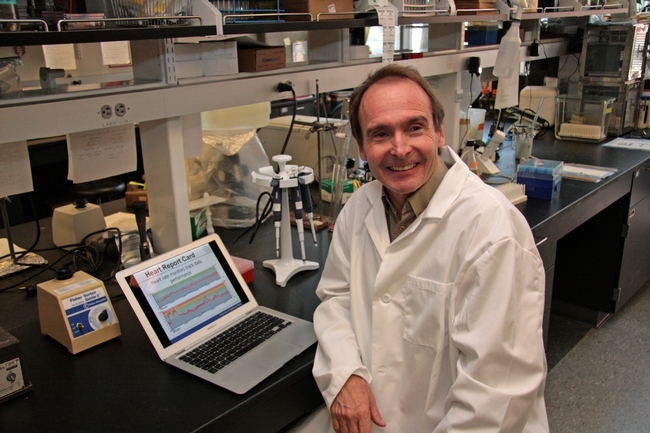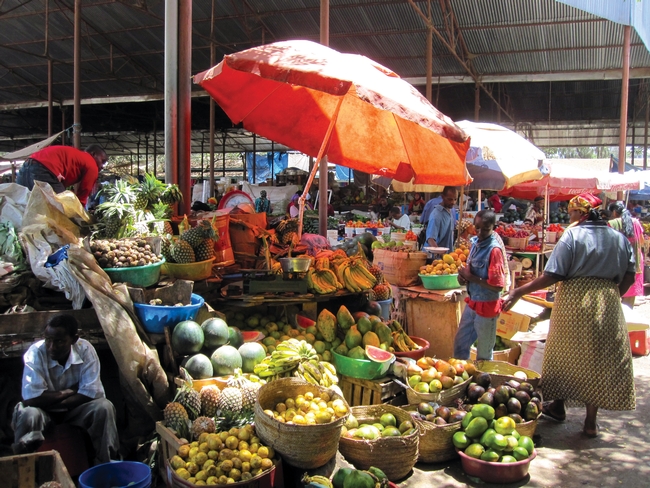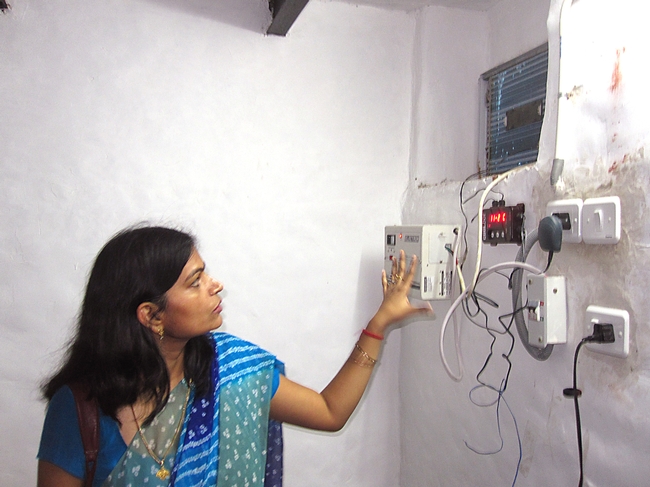Posts Tagged: technology
Machines can help wine grape industry survive labor shortage
Wine grape growers in California and elsewhere face increasing labor costs and severe labor shortages, making it difficult to manage and harvest a vineyard while maintaining profitability. Growers are increasingly turning to machines for pruning, canopy management and harvesting, but how well these practices are executed can substantially affect yield and quality. A new review by researchers at the University of California, Davis, published in the journal Catalyst, provides guidelines for growers to make the best use of machines.
“Wine grape laborers have been virtually nonexistent. People don't want to work in vineyards anymore because it's remote, tough work,” said Kaan Kurtural, UC Davis professor of viticulture andenology andUC Cooperative Extension specialist. “There is now machinery available to do everything without touching a vineyard.”
Kurtural has designed a “touchless” experimental vineyard at the UC Davis Oakville Station to help growers understand how machines can help them cope with the labor shortage. While machines reduce the need for seasonal manual labor, they do not eliminate it. The degree of labor reduction depends on growing region, grapevine type and the number of practices growers mechanize.
The review provides guidance on using machines for winter pruning, canopy management and harvesting as well as how to design a grape vineyard for machines before planting. Videos showing the operation of different types of machinery and practices can also be found in the review.
Economic savings, quality grapes
About 90% of the wine grapes crushed in the U.S. are mechanically harvested. Previous studies have found about a 50% savings in labor costs from using machines to harvest instead of hand harvesting.
“Using more mechanization in a vineyard beyond just harvesting can also reduce labor costs without affecting grape quality.” Kurtural said.
Mechanical pruning, for example, can save between 60% to 80% of labor operation costs per acre compared to manual pruning alone. One experiment in the San Joaquin Valley, where more than 50% of California's wine grapes are grown, also showed using mechanical canopy management machines to manage merlot grapes resulted in twice the amount of color. The more color, or higher anthocyanin concentrations, the better the quality. It can significantly improve returns from vineyards in California's heartland.
Kurtural said there are machines available to manage canopies, including machines for leaf removal, shoot thinning and trunk suckering. Kurtural noted that the machines are American made, developed by researchers at the University of Arkansas and commercialized by manufacturers in Fresno and Woodland, California.
The review was co-authored by Matthew Fidelibus, UC Cooperative Extension viticulture specialist at UC Davis, based at UC Kearney Agricultural Research and Extension Center. Financial support for the research came from the American Vineyard Foundation and Bronco Wine Company.
Original post at https://www.ucdavis.edu/news/machines-can-help-wine-grape-industry-survive-labor-shortage.
New Artificial Intelligence Institute for Next Generation Food Systems
The University of California, Davis, has been awarded $20 million as part of a multi-institutional collaboration to establish a new institute focused on enabling the next generation food system through the integration of artificial intelligence, or AI, technologies. The award is part of a larger investment announced Aug. 26 by the National Science Foundation, or NSF, in partnership with several federal agencies — distributing a total of $140 million to fund seven complimentary AI research institutes across the nation.
The AI Institute for Next Generation Food Systems, or AIFS, aims to meet growing demands in our food supply by increasing efficiencies using AI and bioinformatics spanning the entire system — from growing crops through consumption. This includes optimizing plant traits for yield, crop quality and disease resistance through advances in molecular breeding, in addition to minimizing resource consumption and waste through development of agriculture-specific AI applications, sensing platforms, and robotics. The team's plan also intends to benefit consumers through enhancements to food safety and development of new tools to provide real-time assessment of meals that can guide personalized health decisions.
“The food system is ripe for disruption, with many advances over the past decade paving the way to a transformation,” said Ilias Tagkopoulos, professor in the UC Davis Department of Computer Science and Genome Center, and director of the new institute. “AI will serve as both the enabling technology and the connective tissue that brings together these elements and catalyzes this transformation to a safer, fairer and more efficient food system for the next generation.”
Other principal investigators from UC Davis include Nitin Nitin, professor in the Department of Biological and Agricultural Engineering; Mason Earles, assistant professor in the Department of Viticulture and Enology; and Xin Liu, professor in the Department of Computer Science.
The institute has been designed to be inclusive, fostering collaborations to develop open-source AI solutions across the food system. Given food's fundamental role in human health and well-being, coupled with its far-reaching impacts on the national economy and environment, the institute will bring together over 40 researchers from six institutions: UC Davis; UC Berkeley; Cornell University; University of Illinois, Urbana-Champaign; UC Division of Agriculture and Natural Resources; and the U.S. Department of Agriculture's Agricultural Research Service.
In addition to the scientific and technical objectives, the institute's charter includes a significant focus on education, outreach and collaboration.
“Our success won't only come from breakthroughs and innovation of new technologies and systems, but also a ready workforce, an engaged public and collaboration with industry partners to solve real challenges,” said Gabriel Youtsey, chief innovation officer at UC ANR.
Education and engagement
The institute's plan includes programs specific for K-16 education, college internships and fellowships, curriculum enrichment, broadening participation and diversity, corporate engagement, and knowledge transfer. These programs will be bolstered by leveraging existing platforms such as UC Davis' Innovation Institute for Food and Health, CITRIS Banatao Institute and UC ANR's Verde Innovation Network for Entrepreneurship, or VINE. Additional efforts are planned in alignment with NSF's call to ensure AI systems are secure, safe, ethical and fair through design, accountability and transparency.
Development of the proposal for the award was facilitated by the Interdisciplinary Research and Strategic Initiatives division of the Office of Research at UC Davis. The institute is designated as a Special Research Program under the administration of the Office of Research.
“As with many of our world's greatest challenges, addressing the critical needs in our food supply requires extensive collaboration between experts from different disciplines,” said Prasant Mohapatra, vice chancellor for research at UC Davis. “The collection of expertise assembled for this new institute brings much hope for transformative advancements to be realized.”
Funding for the institute is provided by the U.S. Department of Agriculture's National Institute of Food and Agriculture as part of a larger initiative led by the U.S. National Science Foundation to establish new artificial intelligence institutes to accelerate research, expand America's workforce and transform society in the decades to come. The NSF AI institutes will collaborate with industry and government to advance the frontiers of AI as well as a range of science and engineering disciplines and societal sectors that stand to benefit from AI innovation.
“Recognizing the critical role of AI, NSF is investing in collaborative research and education hubs, such as the USDA-NIFA AI Institute for Next Generation Food Systems anchored at UC Davis, which will bring together academia, industry, and government to unearth profound discoveries and develop new capabilities advancing American competitiveness for decades to come,” said NSF Director Sethuraman Panchanathan. “Just as prior NSF investments enabled the breakthroughs that have given rise to today's AI revolution, the awards being announced today will drive discovery and innovation that will sustain American leadership and competitiveness in AI for decades to come.”
How one farmer’s invention is reducing postharvest losses around the world
In many developing countries, more than half of all fruits and vegetables are never eaten, but instead are lost, damaged or spoiled after harvest. These “postharvest” losses can mean that farmers need to sell their fresh produce as soon as it is harvested for whatever price they can get, before they lose the crops that represent investments of labor, water, and agricultural inputs. Improving how fruits and vegetables are handled after harvest can significantly prolong freshness — and cooling is key.
“The three most important aspects of postharvest handling are: temperature, temperature, temperature,” said Michael Reid, UC Cooperative Extension postharvest specialist who works with the Horticulture Innovation Lab at UC Davis. “In the developing world in particular, affordable cooling technology is mostly absent.”
Cooling can be expensive — even for American farmers
As a farmer in upstate New York, Ron Khosla knew this problem too well. His vegetable crop was spoiling too quickly, but he could not afford to buy a walk-in cooler for his small farm. So he invented a solution: a small electrical device he called a CoolBot that tricks an air conditioner into getting colder without freezing over, turning a well-insulated room into a cold room at lower costs than refrigeration.
“I was hoping for a cheap, DIY solution that I could maintain. But mostly I just needed to keep my leafy greens and strawberries cold,” Khosla said.
Khosla's CoolBot invention caught the eye of postharvest researchers, including Reid, who saw it in action on farms in California and decided to try using it in developing countries too.
CoolBot goes global with the Horticulture Innovation Lab
In one of his first projects with the Horticulture Innovation Lab (a program led by UC Davis with funding from the U.S. Agency for International Development), Reid partnered with agricultural scientists from Uganda, Honduras and India to test the CoolBot in their climates. The four scientists also tested different local materials as insulation for each of the cold rooms.
Since that first project, the Horticulture Innovation Lab has tested CoolBots for farmer cold storage in Tanzania, Zambia, Uganda, Thailand, Cambodia, Bangladesh, India and Honduras.
Jane Ambuko of the University of Nairobi is another Horticulture Innovation Lab partner who has worked with the CoolBot. She received a grant to pilot this technology with mango farmers for a program called the Kenya Feed the Future Innovation Engine. Her project was featured on an NTV Food Friday news segment about the CoolBot earlier this month.
“I see the CoolBot making a whole lot of difference,” Ambuko said during a TEDxNairobi speech. “But for it to make that desired difference we have to make it cost-effective and affordable for the smallholder farmers.”
Adapting, troubleshooting and scaling up
In many places, the most expensive part of a CoolBot-equipped cold room is the structure for the insulated room, but both Reid and Khosla expect foam building materials to become more widely available and affordable.
In the meantime, Khosla's small business has been growing — selling to not only farmers, but also florists, micro-brewers, and other artisanal food businesses. Now with six employees, the company has sold more than 27,500 CoolBots in 51 countries.
“I'm thrilled and so grateful to be a part of helping lots of people. Working with USAID has gotten us known in other countries, and I'm looking forward to the day when we have enough in-roads in India and Africa where we can work directly with farmers there,” Khosla said. “People didn't believe the CoolBots worked at first. But now we get the most amazing letters from people whose businesses have doubled or quadrupled. Good postharvest care makes such a difference. Once they try it, then they see.”
A previous version of this article appeared in the newsletter for Feed the Future, the U.S. government's global hunger and food security initiative, and also in the Horticulture Innovation Lab blog.
Event - Sustainable solutions and extending California's agricultural expertise to the world: The UC Global Food Initiative and UC Blum Centers will host a Global Food Summit on Sustainable Solutions, May 5-6 at UC Irvine. Elizabeth Mitcham, director of the Horticulture Innovation Lab and UC Cooperative Extension postharvest pomologist at UC Davis, will be speaking about technology transfer for horticulture-related technologies such as the CoolBot, seed drying beads, UC Davis-designed chimney solar dryer, pest-exclusion nets, and other tools the program adapts to the needs of farmers in developing countries. She will also be on a panel with two other UC Davis-based directors of Feed the Future Innovation Labs (UC Davis leads five Feed the Future Innovation Labs with funding from USAID — more than any other university). More info about this event.
UC Davis decoding mother's milk for clues to lasting health
Is there such thing as a nutritionally perfect food? Is there something a human can consume that provides everything a body needs to stay healthy?
Yes, scientists say. Breast milk.
“Mother’s milk is the Rosetta stone for all food,” said Bruce German, professor in the Department of Food Science and Technology at UC Davis and director of the UC Davis Foods for Health Institute. “It’s a complete food, a complete diet, shaped over 200 million years of evolution to keep healthy babies healthy.”
German and his team are now decoding breast milk to better understand its components and why they work so well. They are discovering a wealth of information about how best to feed and protect the human body, lessons that will enhance health not just for infants but for us all.
What are they learning?
For one thing, a large part of breast milk goes into babies' mouths and out into their diapers with no digestion along the way. That's astonishing. Of the 500 calories a lactating woman burns each day to make milk, 10 percent is spent synthesizing something the baby treats as waste. If it didn’t have value to the developing baby, wouldn’t natural selection have discarded it long ago?
Turns out, it has great value. The indigestible matter is a slew of sugar polymers called oligosaccharides that feed specific bacteria in a baby’s gut. The oligosaccharides help good bugs proliferate and dominate, keeping babies healthy by crowding out the less savory bugs before they can become established and, perhaps more important, nurturing the integrity of the lining of an infant’s intestines, which play a vital role in protecting them from infection and inflammation.
“What a genius strategy,” German said. “Mothers are recruiting another life form to babysit their babies.”
So maybe when we nourish our bodies, we should think about feeding our good bugs, too.
How do we do that? Good question. Scientists can’t yet say for sure what a healthy bacterial community in our guts should look like, let alone how best to promote it. But one thing is certain, German says.
“Our good bacteria play a much more important role in our health than we realized,” German said.
So oligosaccharides might support microbial balance in our digestive tracts. Nursing babies can get them from their mothers. What about the rest of us?
Another good question, and UC Davis researchers are on it, identifying, extracting and delivering health-promoting oligosaccharides from various sources, including whey, the waste product from cheese making.
You can read all about it (and more) in this story on the UC Davis College of Agricultural and Environmental Sciences website: http://caes.ucdavis.edu/news/articles/2013/09/title-uc-davis-decoding-mother2019s-milk-for-clues-to-lasting-health
Hot days, cool rooms, tasty vegetables
I'll admit that one of my favorite things to do on a hot day is to walk into an air-conditioned room. That burst of cool air in those first moments can be so refreshing.
It turns out I'm not alone — fruits and vegetables like to be cool on hot days too.
Controlling temperature helps regulate the aging process of a fruit, along with its water loss and microorganism growth. Storing fruits and vegetables at their lowest safe temperatures means they taste better and last longer.
To help us know the best ways to store fresh produce at home, the UC Davis Postharvest Technology Center offers a free PDF poster Storing Fresh Fruits and Vegetables for Better Taste, which includes tips for different fruits and vegetables, from avocado to watermelon.
Knowing the right temperature is only part of the battle for farmers, who are responsible for the first links in the cold chain. Getting produce out of the sun and cool for storage can be a big challenge — and an expensive one.
But a farmer in New York, Ron Khosla, answered this challenge with a tool that can help make cooling produce less expensive for small-scale farmers. He created the CoolBot, a micro-controller that turns a well-insulated room with a regular air conditioner into a commercial cool room for storing fruits and vegetables.
Just as small-scale American farmers struggle with affordable cooling, so do smallholder farmers elsewhere in the world. Researchers with the Horticulture Collaborative Research Support Program (Horticulture CRSP) decided to test the CoolBot device, first at the UC Davis Student Farm and then with farmers in India, Honduras and Uganda.
Indeed, the CoolBot-equipped rooms worked, and the program is building more in Bangladesh right now. But there is a catch: Farmers must have access to reliable grid electricity for a cool room like this to work. To address this problem, the CoolBot in Uganda was powered with solar photovoltaic cells, but that led to another set of challenges — expensive equipment and fear of theft.
So how do you effectively cool vegetables, hot from a field, without grid electricity? A solution that is low-cost, effective and off-grid has not been found yet. In an effort to uncover such a solution, Horticulture CRSP will soon be launching a technology design competition that asks that very question. Can you answer this challenge?


